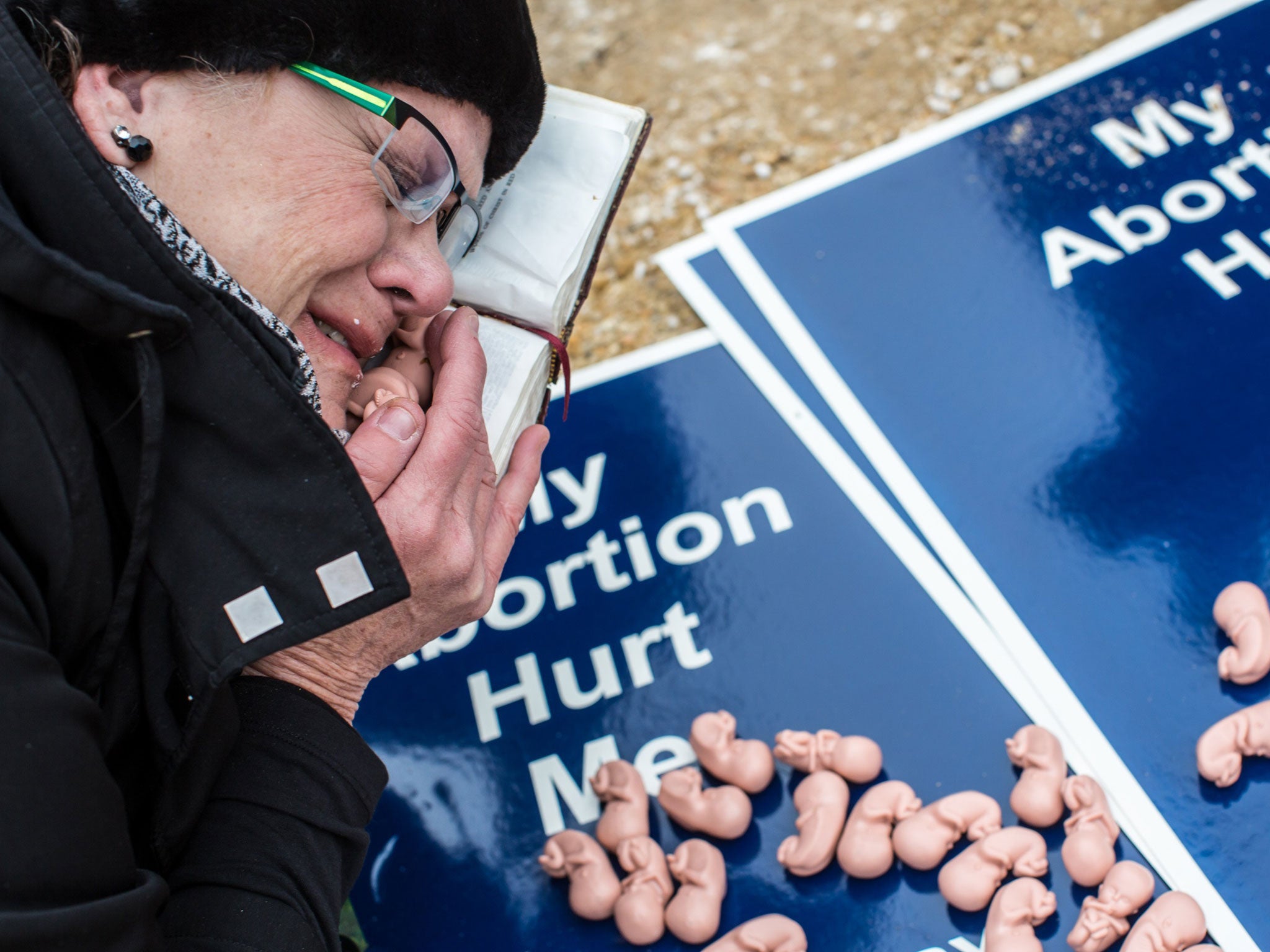America is a nation still divided by a woman's right to choose
Out of America: Forty years after Roe vs Wade made abortion legal, the issue is more contentious than ever


Roe vs Wade? No it's not, as Bob Hope memorably quipped about Dan Quayle, a choice between two ways of crossing a river. It is the landmark ruling of the United States Supreme Court exactly 40 years ago that legalised abortion, a decision the court based on the constitutional promise of a citizen's right to privacy. And as anyone with the remotest interest in American politics will also be aware, the issue is today more divisive than ever.
On Friday, thousands of abortion opponents braved Washington's icy weather to take part in a March of Life on the Mall, to mark – or rather denounce – the ruling on its 40th anniversary. That rally came after an election campaign in which abortion helped to shape the outcome as rarely before.
Undoubtedly the Republicans' growing opposition to abortion cemented support among women for President Obama, a vital factor in his victory; arguably, too, abortion cost Republicans control of the Senate. Remember the remark of Todd Akin about how a woman's body could "shut down" in the case of a "legitimate" rape? Or Richard Mourdock's insistence that a pregnancy arising from rape was "the will of God"?
Messrs Akin and Mourdock were Republican candidates in the red states of Missouri and Indiana respectively, competing for seats the party was expected to win. Both lost. Yet their defeats also illustrate the great abortion paradox here. Americans favour a woman's basic right to end a pregnancy – but at the same time they oppose them.
Back in January 1973, the nine justices struck down the Texas law that made abortion a crime other than in cases of rape and incest, that was at the heart of Roe vs Wade. The margin was 7-2, remarkably clear cut by today's standards where many key court decisions are 5-4 squeakers.
And poll after poll since has shown broad and consistent support. In the most recent, by NBC News and The Wall Street Journal last week, as many as 70 per cent said they did not want the law overturned, a proportion if anything higher than a decade ago. Yet at the same time by a clear majority, 51 per cent to 40 per cent, Americans declare themselves in another poll to be pro-life rather than pro-choice. Thus today's endless argument over abortion, a war of attrition with no end in sight.
Since 1973, the court has revisited the abortion issue half a dozen times. In each instance it has left Roe vs Wade's central tenet intact, while chipping away at the edges: barring government employees from performing abortions, allowing states to impose restrictions on first-trimester abortions, and banning so-called "partial birth" abortions. And as the Supreme Court has chipped, many states – all Republican-run – have joined in with a vengeance.
Take Virginia, which last year sought to require women seeking an abortion to face an invasive and medically unnecessary transvaginal ultrasound examination. Public outcry forced that plan to be dropped, in favour of an external exam, the so-called "jelly on the belly" procedure. The state has also passed retroactive legislation requiring clinics, old as well as new, to conform to the same building standards as new hospitals. To comply, abortion clinics will have to spend a great deal of money on renovation. Or they will lose their licence – which, of course, is what the law's proponents were seeking.
In conservative South Dakota, a mountain of paperwork has been added to the already stressful abortion process. The mandatory waiting period has been increased to 72 hours from 24, while a patient must undergo counselling, including an explicit warning from her doctor that the abortion will "terminate the life of a whole, separate, unique, living human being". If that shames a woman into keeping her child, that is precisely what the law's supporters intend.
The social effects of Roe vs Wade are harder to quantify but surely profound. Fewer children have grown up in poverty and in single-parent households. Conceivably, the availability of abortion is linked to the drop in crime rates in the US since the mid-1990s – on the theory that some of these children who would otherwise have been born post-1973 would have been more likely to commit crimes.
But the war of attrition risks a return to the status quo ante. As always, money talks: better-off and better-educated women will be able to secure abortions easily while women who are poor and don't know their way around the system and its thickets of new restrictions will not.
Maybe the only hope of reversing the trend lies in a long-term change of attitude by a Republican party no longer able to afford the alienation of women, nor to be perceived as callous and indifferent to ordinary people. If so, things will have gone full circle. Until the late 1960s, Republicans were if anything more favourable to abortion rights than Democrats. Then Richard Nixon made his play for the "silent majority", including socially conservative Roman Catholic Democrats, a key electoral group in several northern swing states. By 1972, he was denouncing his liberal opponent George McGovern as a champion of "amnesty, abortion and acid". Battle was joined and, notwithstanding Roe vs Wade, has continued ever since. Bill Clinton ought to have resolved the issue, when he said that abortion should be "safe, legal and rare". Would that it were so simple.

Join our commenting forum
Join thought-provoking conversations, follow other Independent readers and see their replies